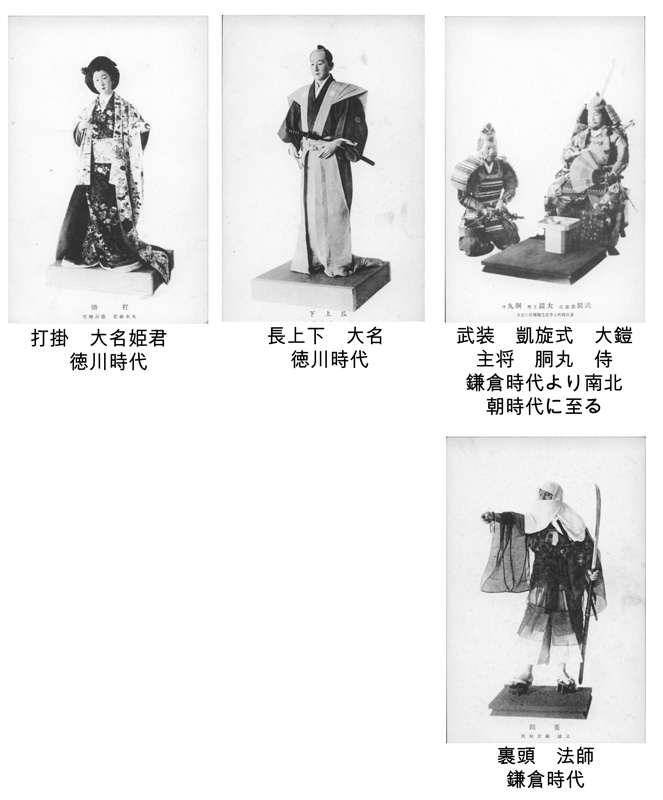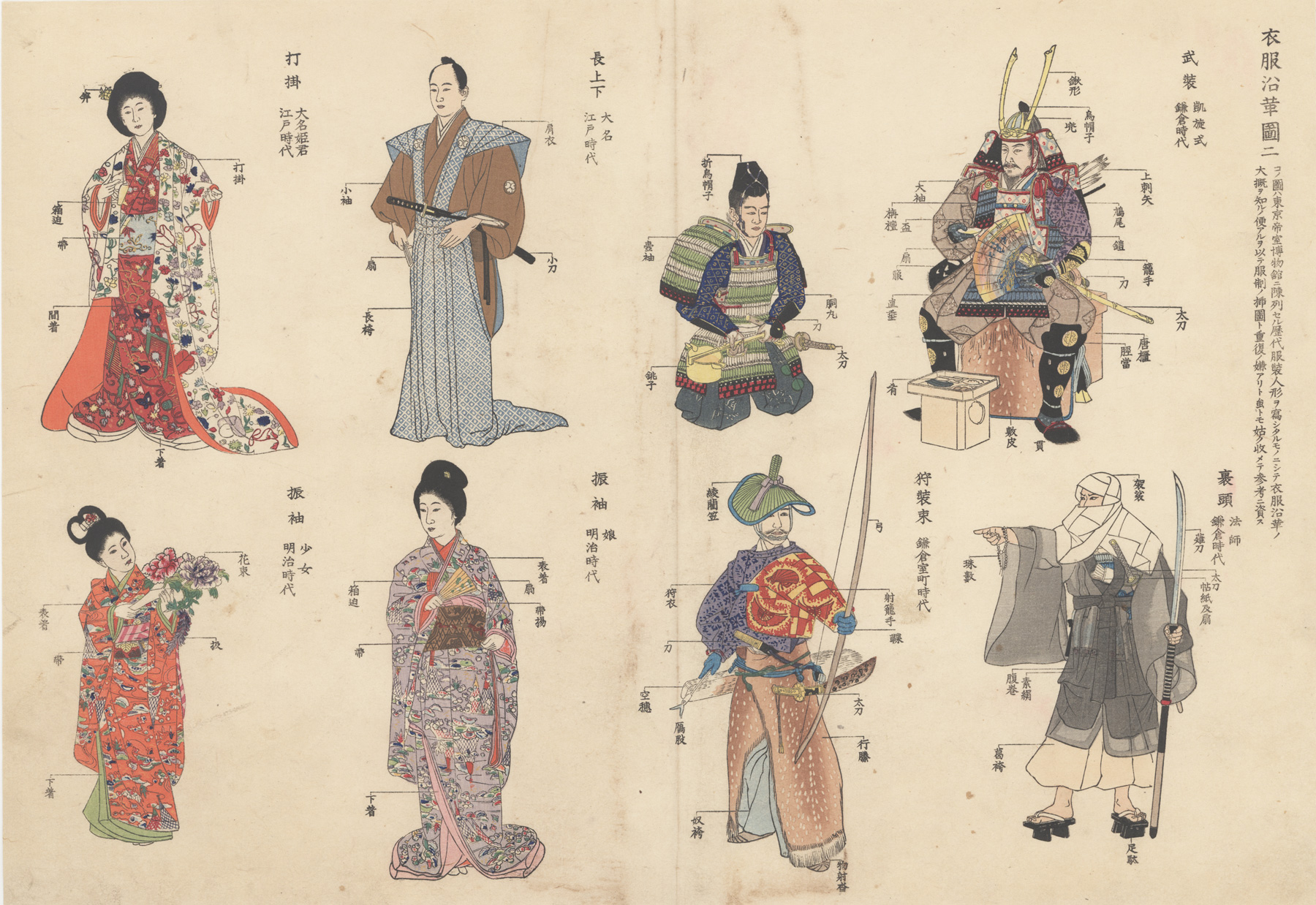About This Print
One of 38 photomechanical and woodblock illustrations in volume 2 of Kokushi daijiten (Encyclopedia of Japanese History). This print is the second of two providing a graphic overview of various garb worn by nobles and the samurai class during various periods of Japanese history. The illustrations, by an unknown artist, were based upon a display of clothed life-size dolls (ningyō) at the former Tokyo Imperial Museum (Tōkyō Kokuritsu Hakubutsukan), now the Tokyo National Museum.In this print, eight examples of clothing are shown, including ceremonial triumphal-style armor worn during the Kamakura period (1185-1333); formal kimono (naga-kamishimo) worn by daimyo during the Edo period (1600-1868); an Edo period bridal robe; a Kamakura period Buddhist warrior priest's garb, complete with cowel (katō 裹頭) to conceal his identity, and naginata 薙刀; a hunting outfit worn during the Muroamchi (1333-1573) and Kamakura periods; and a woman and girl in Meiji period furisode.
In the collection of the Hakodate City Central Library are four postcards (see below) published (date unknown) by the Tokyo National Museum with photographs of the actual exhibits this illustration was based upon.
Four Postcards of the Costumed Ningyō at the Tokyo National Museum
Source: Hakodate City Central Library Digital Archives

Kokushi daijiten - Encyclopedia of Japanese History
Kokushi daijiten 国史大辞典, variously translated as Encyclopedia of Japanese History, Dictionary of Japanese History, Comprehensive Dictionary of National History and Great Dictionary of National History was first published in two volumes in 1908. The first edition is comprised of two volumes, with the first volume containing 2,380 pages of material and volume 2 containing supporting maps and illustrations reproduced using woodblock and photomechanical means. Numerous subsequent editions have been published and today the encyclopedia has grown to 15 volumes (17 books).
The compiler, or editor-in-chief, was the literary scholar and historian Professor Hagino Yoshiyuki 萩野由之 (1860-1924) and listed editors are Inobe Shigeo 井野邊茂雄 (1877-1954), Hayakawa, Junzaburō 早川純三郎 and Yashiro Kuniji 八代國治 (1873-1924 ).
The publisher was Yoshikawa Kōbunkan, 吉川弘文館, Japan's oldest extant publisher, founded in Tokyo by Yoshikawa Hanshichi (d. 1902) in Tokyo.
Print Details
| IHL Catalog | #2439 |
| Title or Description | An Illustration of the Historical Evolution of Clothing, Sheet 2, Illustration 10, Kokushi daijiten, Volume 2, Illustrations and Chronology 国史大辞典 挿絵及年表 Kokushi daijiten sashie oyobi nenpyō |
| Artist | Unknown |
| Signature | unsigned |
| Seal | not sealed |
| Publication Date | originally 1908. Numerous editions known. |
| Publisher | Yoshikawa Kōbunkan, 吉川弘文館 [founded by Yoshikawa Hanshichi 吉川半七 (d. 1902] source: The Oxford Companion to the Bood, ed. Michael F. Suarez, et. al., Oxford University Press, 2010 Yoshikawa Kōbunkan is "the oldest Japanese publisher still in existence was founded in Tokyo in 1857 by Yoshikawa Hanshichi (d. 1902). Highly respected by academics, Yoshikawa Kōbunkan specializes in history and classics." |
| Carver | |
| Printer | excellent |
| Colors | excellent |
| Condition | good - light toning throughout and soiling; centerfold |
| Genre | sashi-e |
| Miscellaneous | |
| Format | |
| H x W Paper | 9 3/8 x 13 3/4 in. (24.8 x 34.9 cm) |
| H x W Image | |
| Literature | |
| Collections This Print | The New York Public Library Digital Collections NYPL catalog ID (B-number): b12078221 [Accessed May 1, 2021]; National Diet Library Call Number 210.033-Y571k |
| Literature |
5/1/2021 created


